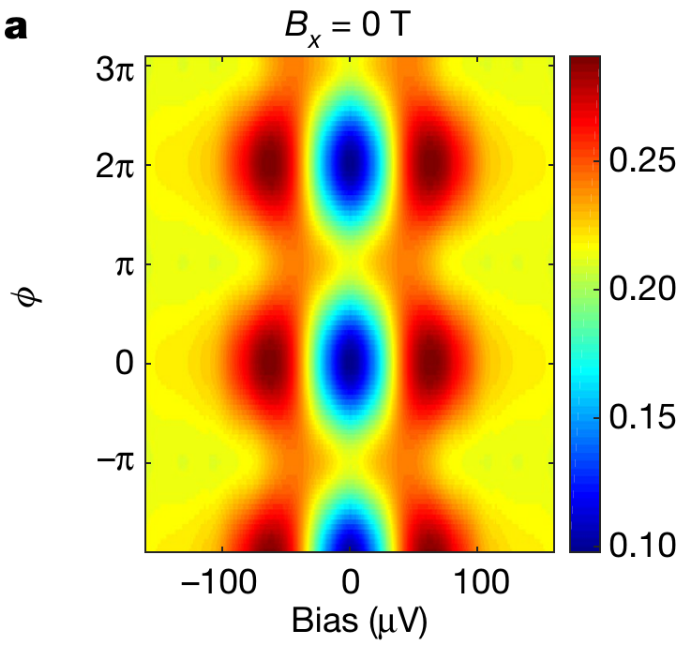
Abstract
Topological superconductors can support localized Majorana states at their boundaries. These quasi-particle excitations obey non-Abelian statistics that can be used to encode and manipulate quantum information in a topologically protected manner. Although signatures of Majorana bound states have been observed in one-dimensional systems, there is an ongoing effort to find alternative platforms that do not require fine-tuning of parameters and can be easily scaled to large numbers of states. Here we present an experimental approach towards a two-dimensional architecture of Majorana bound states. Using a Josephson junction made of a HgTe quantum well coupled to thin-film aluminium, we are able to tune the transition between a trivial and a topological superconducting state by controlling the phase difference across the junction and applying an in-plane magnetic field. We determine the topological state of the resulting superconductor by measuring the tunnelling conductance at the edge of the junction. At low magnetic fields, we observe a minimum in the tunnelling spectra near zero bias, consistent with a trivial superconductor. However, as the magnetic field increases, the tunnelling conductance develops a zero-bias peak, which persists over a range of phase differences that expands systematically with increasing magnetic field. Our observations are consistent with theoretical predictions for this system and with full quantum mechanical numerical simulations performed on model systems with similar dimensions and parameters. Our work establishes this system as a promising platform for realizing topological superconductivity and for creating and manipulating Majorana modes and probing topological superconducting phases in two-dimensional systems.